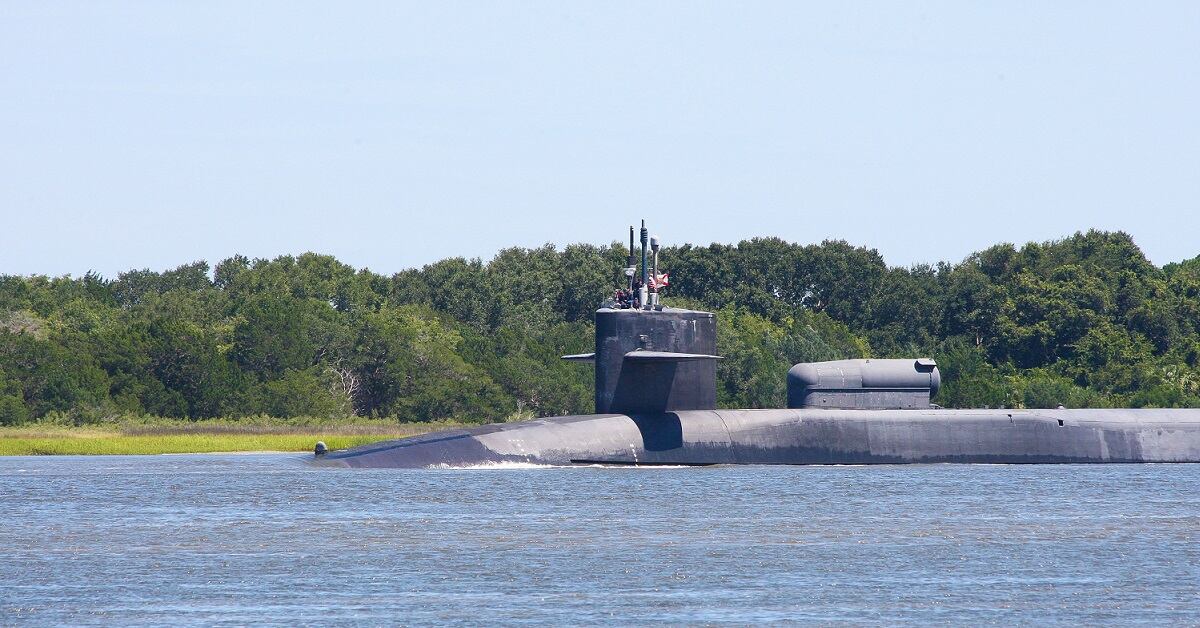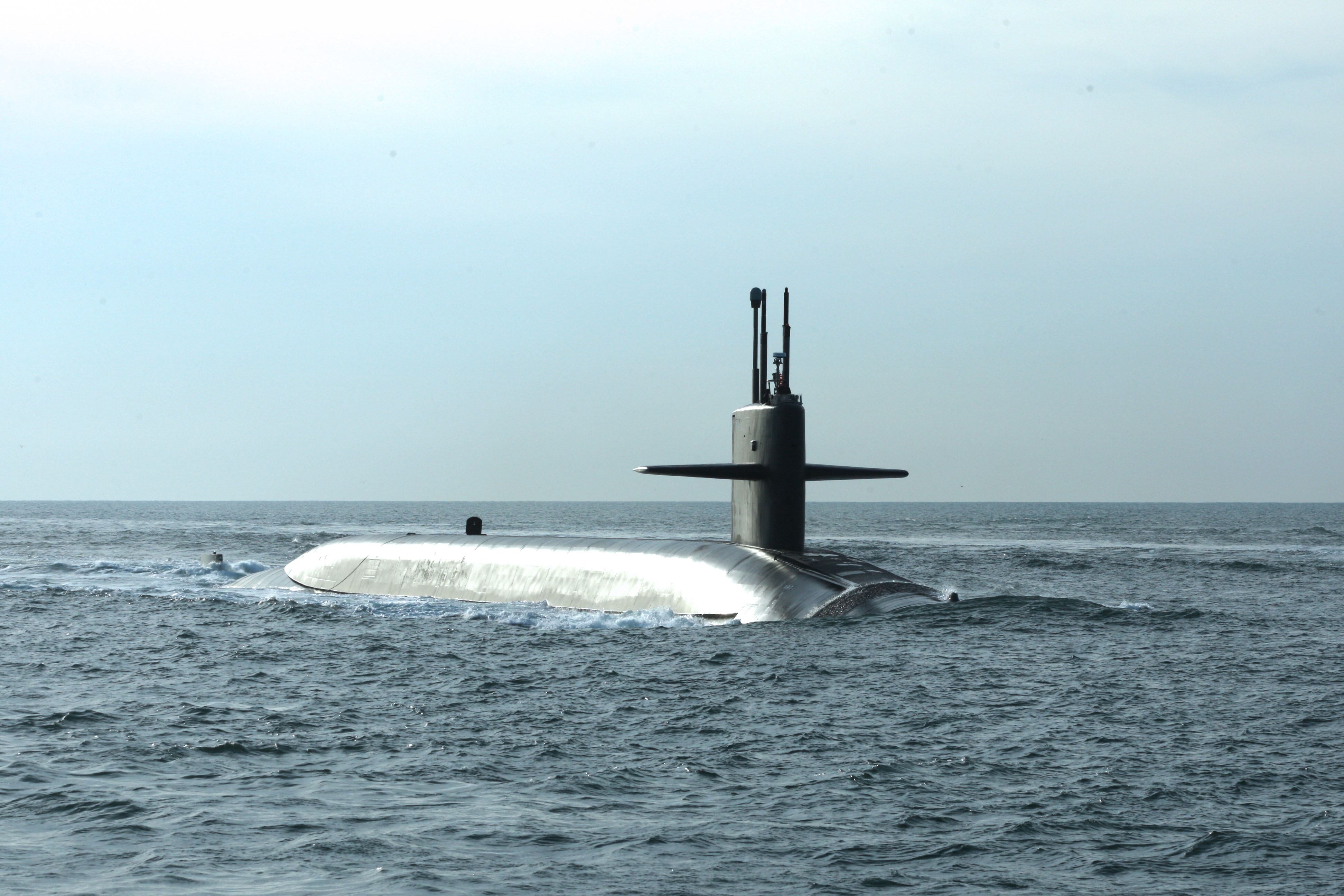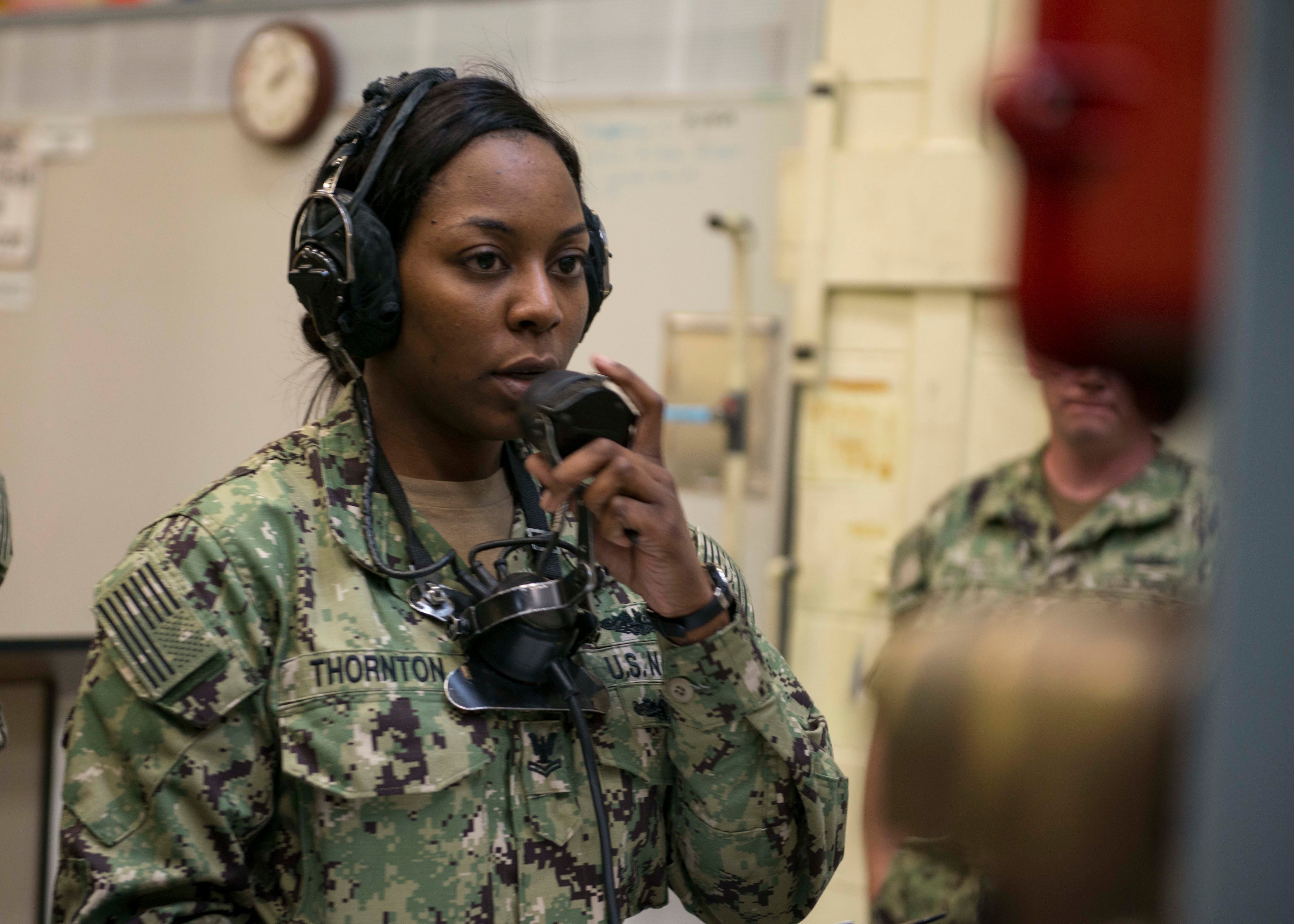The Navy’s effort to integrate submarine crews with women reached an important milestone on Monday when officials announced a “gender-neutral” process for female sailors seeking to join the silent service.
Female officers have been going to sea in submarines since 2011 and a plan to incorporate enlisted women was announced three years later. Since then, the Navy has called four times for female sailors to convert their careers into submarine ratings, the last of the selections coming last year.
Enlisted women now serve in the Blue and Gold crews on board four guided-missile submarines: Ohio, Michigan, Florida and Georgia. Going forward, new volunteers will be converted on a case-by-case basis, just like the men, according to NavAdmin 159/19.
“Today, we have eight submarine crews that are integrated,” said Lt. Cmdr. Adam Cole, spokesman for the chief of naval personnel.
“With that pool of enlisted female submariners already in place, we can now manage the community using a holistic process of planning for planned rotation dates and expected vacancies on each submarine while continuing to integrate future crews.”
RELATED

The total number of women on subs remains small. As of Monday, the Navy counted roughly 85 commissioned officers and 200 female sailors in a force with more than 3,000 officers and 20,000 enlisted men, according to Cole.
But the Navy’s gender integration plan for subs was based on lessons learned after a 1978 federal court ruling prodded the sea service to begin putting women on ships. For the next decade, Navy leaders confronted a flood of junior enlisted women into the surface fleet with no female leaders or support networks in place to help them.
The silent service has not been without problems since the first group of female submariners reported for duty in late 2011.
In 2014, a dozen men were implicated in a scandal involving the filming of female crew members in showers on board the ballistic missile submarine Wyoming, which is now undergoing a midlife refueling at Norfolk Naval Shipyard.
More recently, Navy leaders fired Capt. Gregory R. Kercher, the commanding officer of Florida’s “Gold Crew,” for what they say was his failure to properly address rumors of lewd lists circulating on the boat that sexually rated female shipmates.
But officials say that overall the integration process has gone well and about one out of every five members of an integrated crew is female.
Naval Submarine Forces spokeswoman Cmdr. Jodie Cornell said those numbers are expected to grow, thanks to a plan "to integrate 21 crews with female officers and 14 crews with female enlisted sailors.”
That’s up from today’s 19 crews integrated with female officers and 8 with female enlisted sailors.
RELATED

When it leaves the yard after its Engineered Refueling Overhaul, Wyoming will become one of those boats. Its modernization work includes adapting and expanding berthing spaces for women.
“As with each integrated submarine crew, female officers report first, followed by female E-7 and above sailors, and finally female E-6 and below sailors,” Cornell said.
Although female officers are serving on board fast attack subs, Navy leaders decided not to retrofit existing Los Angeles- or Virginia-class boats to accommodate an influx of enlisted women.
Instead, officials plan to build those berthing spaces into future Virginia-class subs, such as the New Jersey, and the new Columbia-class ballistic missile boats.
Female officers are expected to begin reporting to the New Jersey in 2020, with women in pay grades E-7 and above arriving in late 2022. First class petty officers and below will begin flowing in about six months after that, according to Cornell.

Although Navy recruiters already enlist women into the Navy as submariners in both nuclear and non-nuclear ratings, the initial conversion process outlined in Monday’s message only involves sailors with non-nuclear skills.
But Cole said enlisted submarine billets eventually will be filled the same way they are across the rest of the fleet.
“In general, our enlisted community managers look to fill rates with the most qualified sailors,” he said.
This means that a male enlisted submariner can replace a woman in a specific rating and crew — and the other way around — so long as the “overall male-to-female ratio of the specific submarine” is maintained, Cole said.
The NavAdmin specifies which ratings the Navy is trying to fill in the submarine community and gives guidance on which surface ratings have the best chance for conversion.
Women who apply to convert to submarine ratings can expect a response from Navy Personnel Command within two months, according to the NavAdmin message.
Mark D. Faram is a former reporter for Navy Times. He was a senior writer covering personnel, cultural and historical issues. A nine-year active duty Navy veteran, Faram served from 1978 to 1987 as a Navy Diver and photographer.




